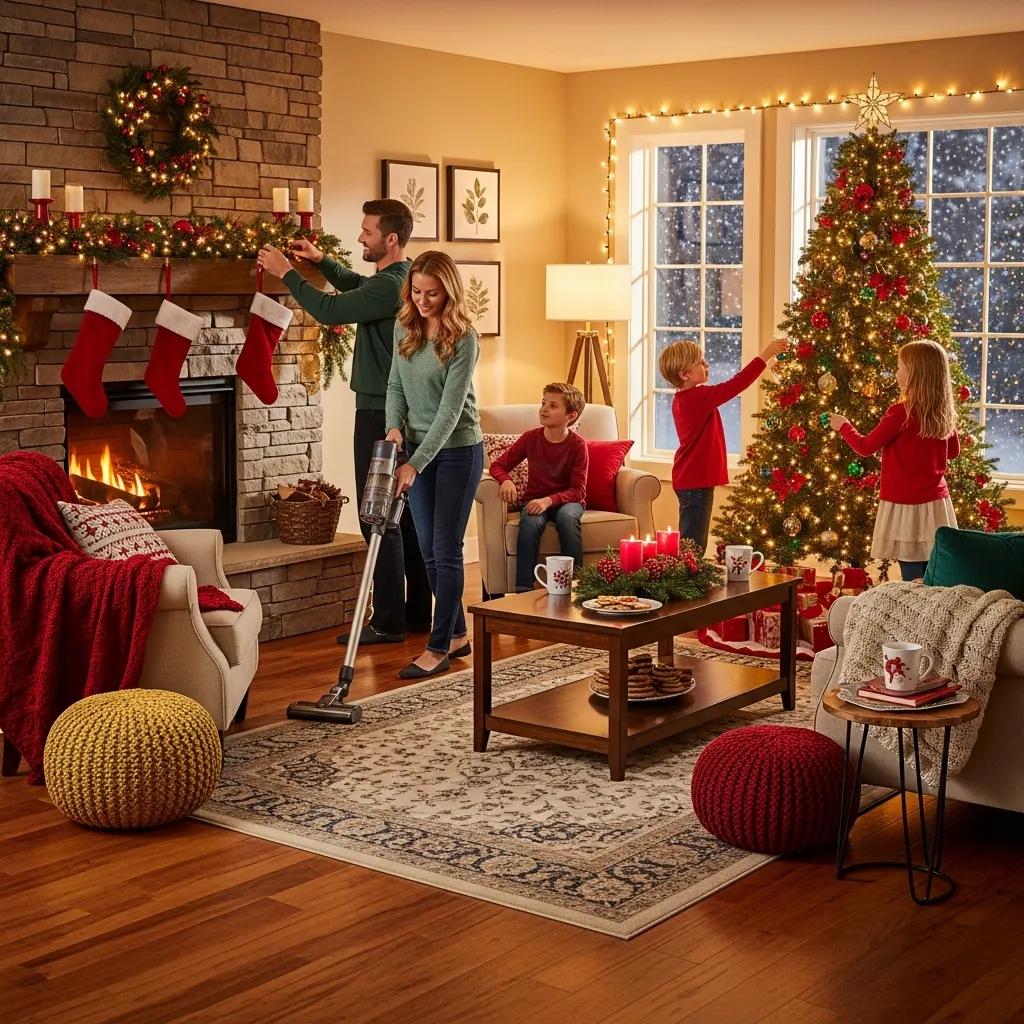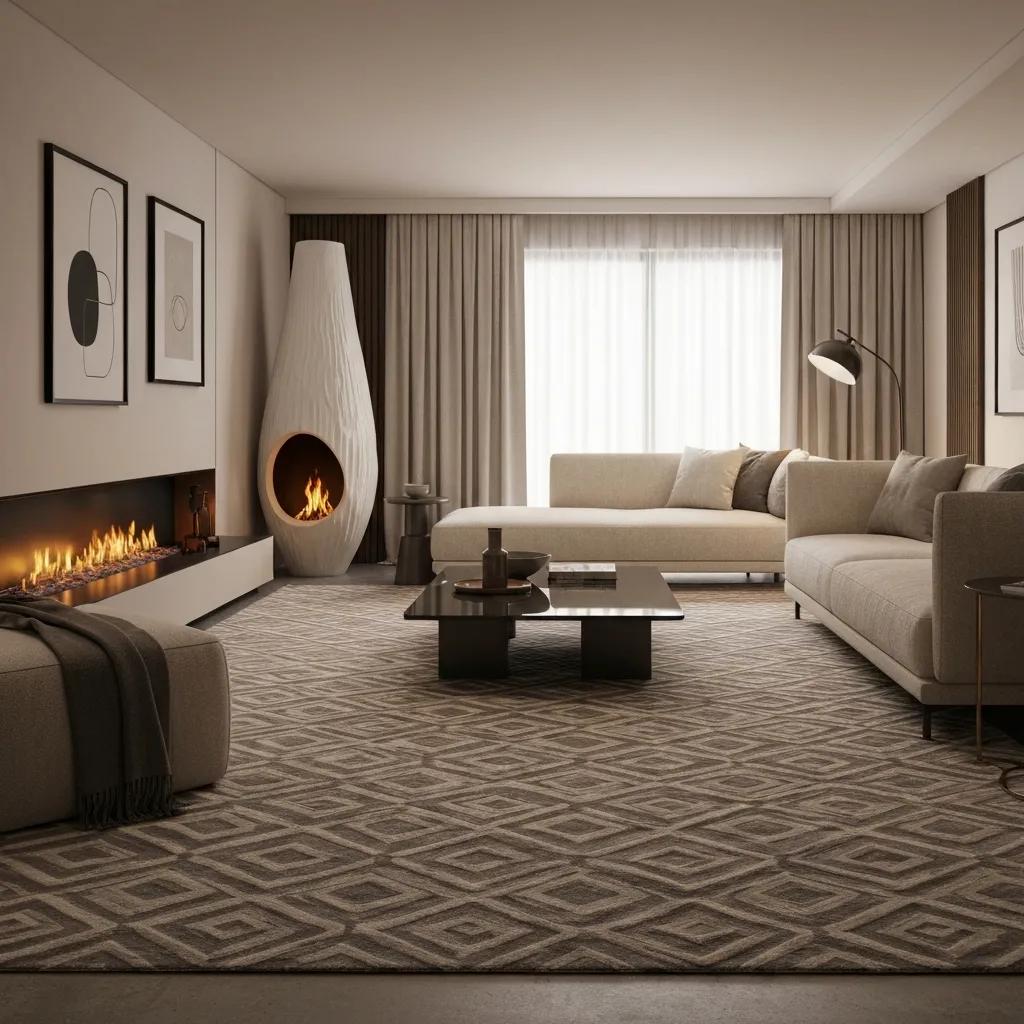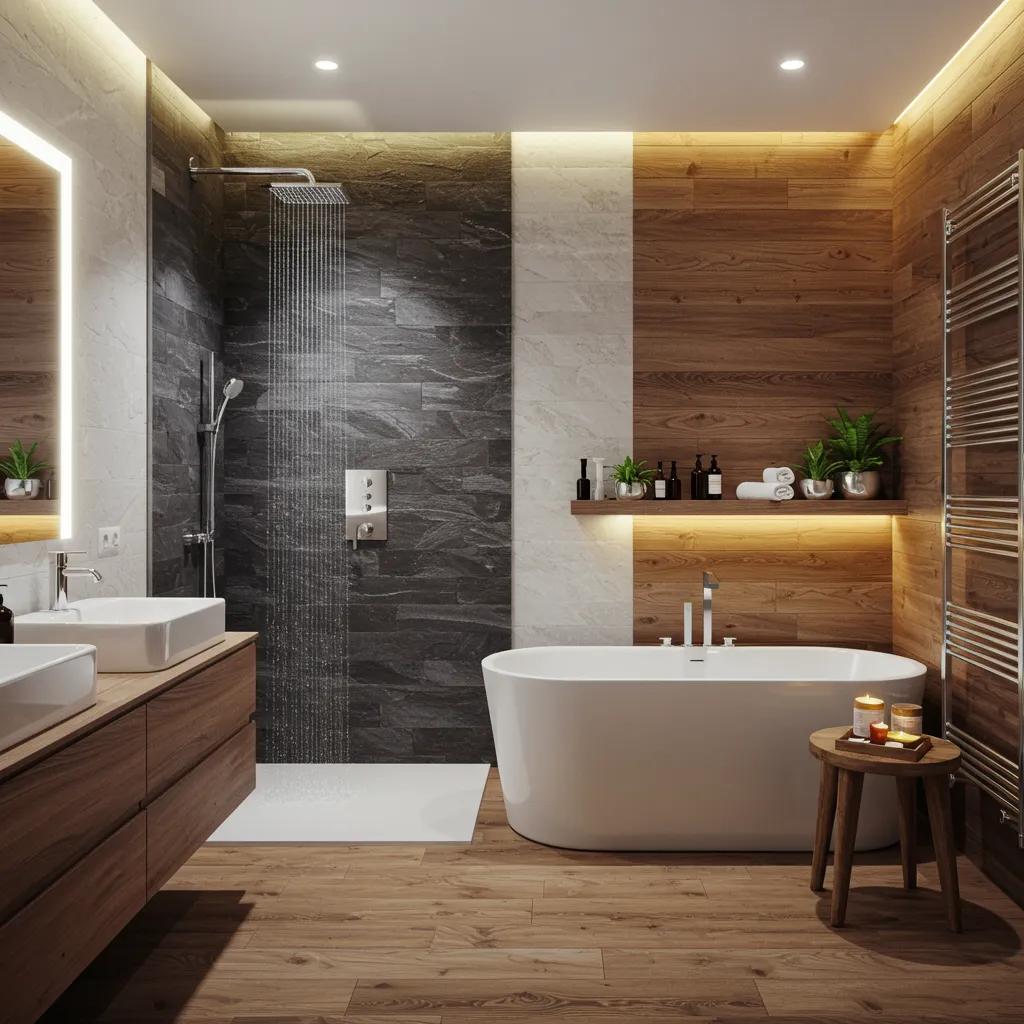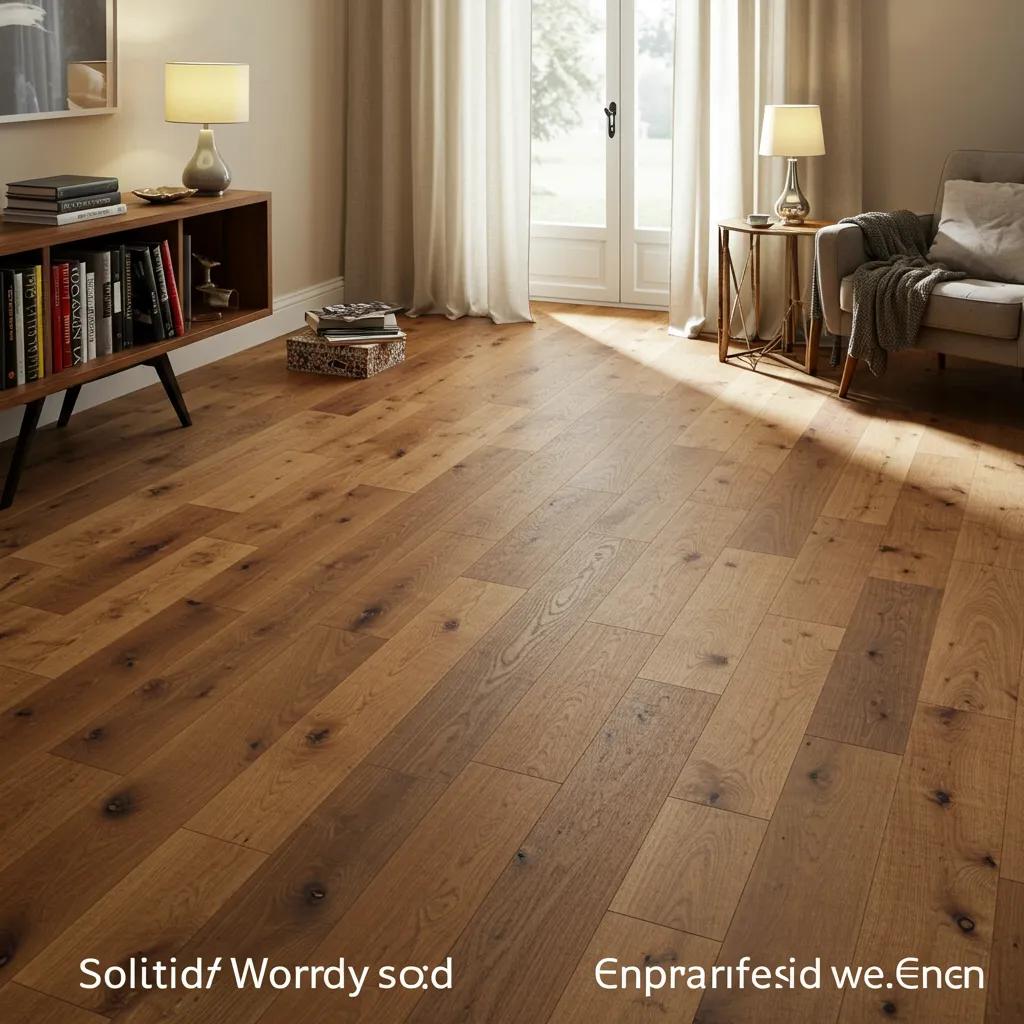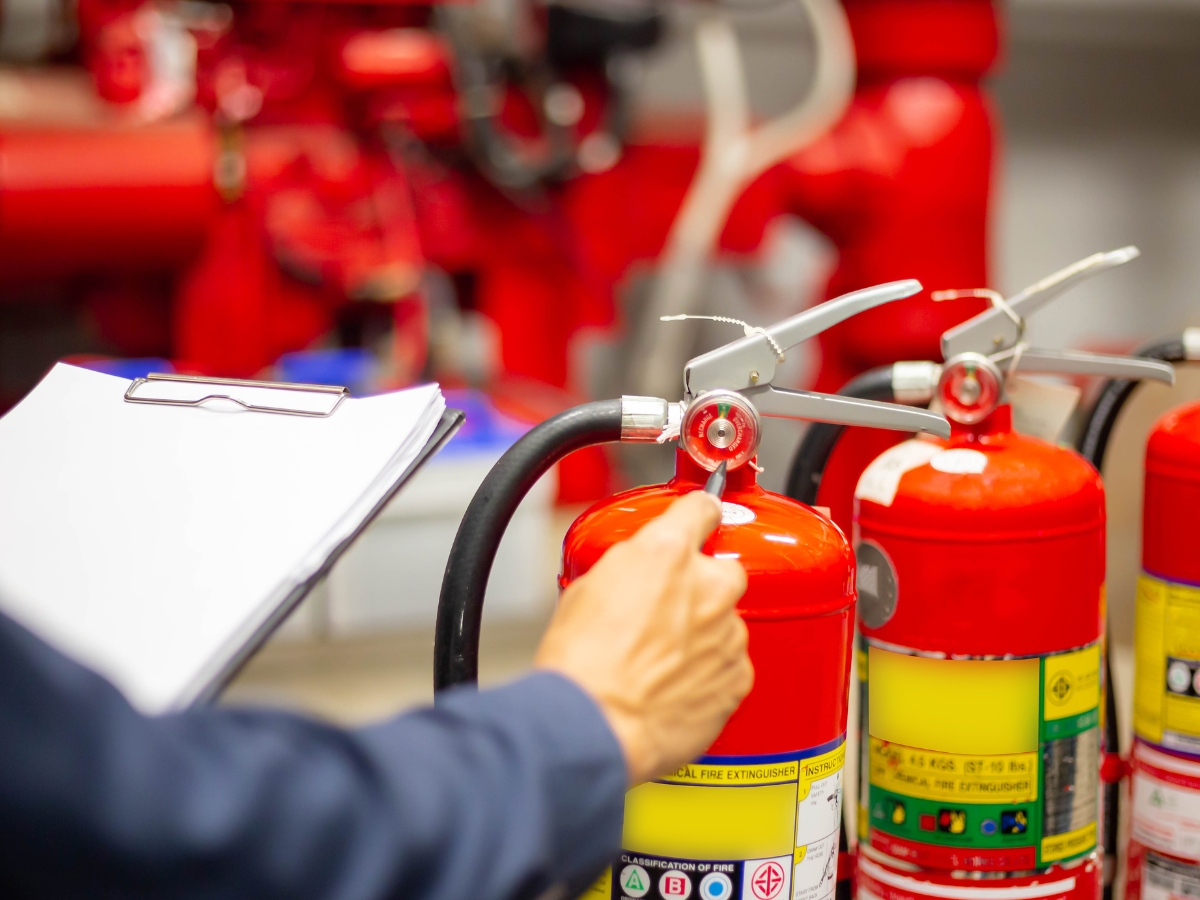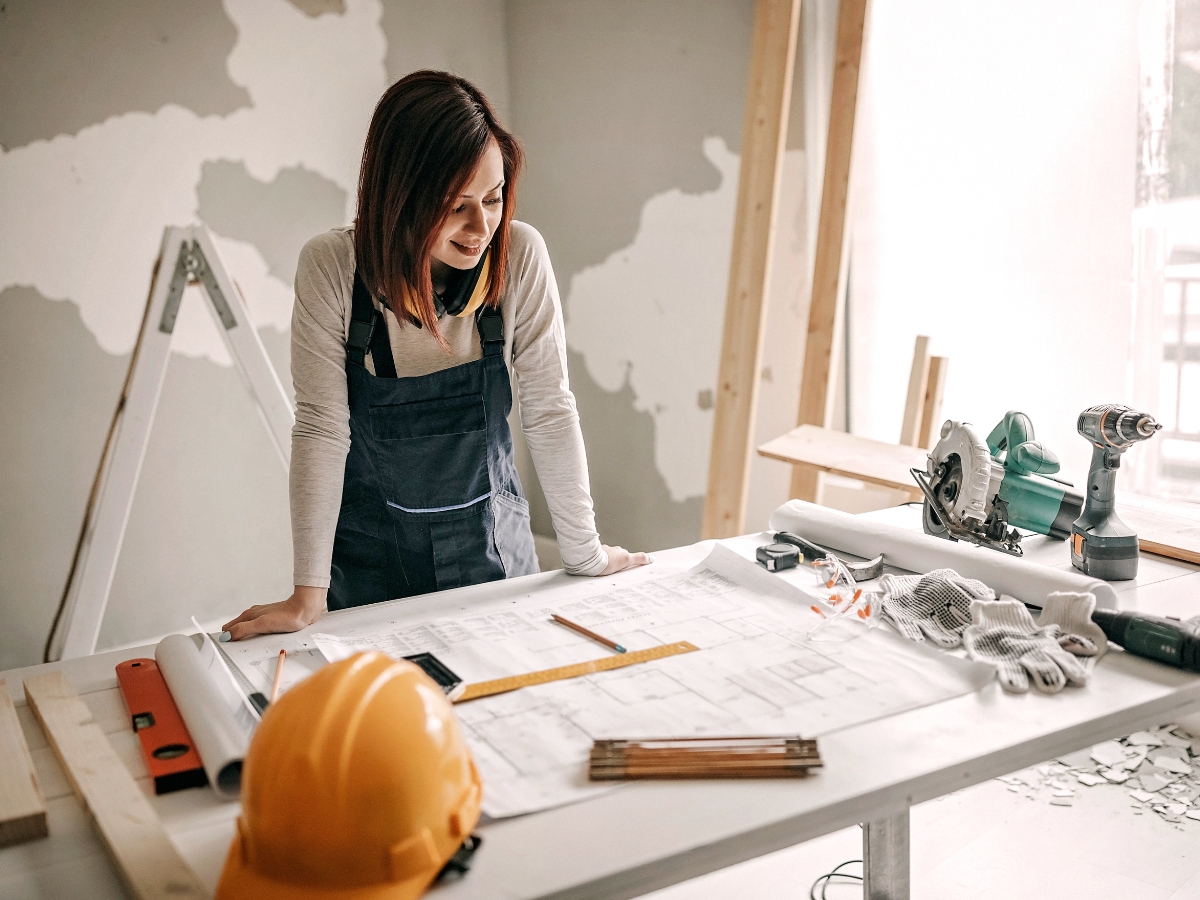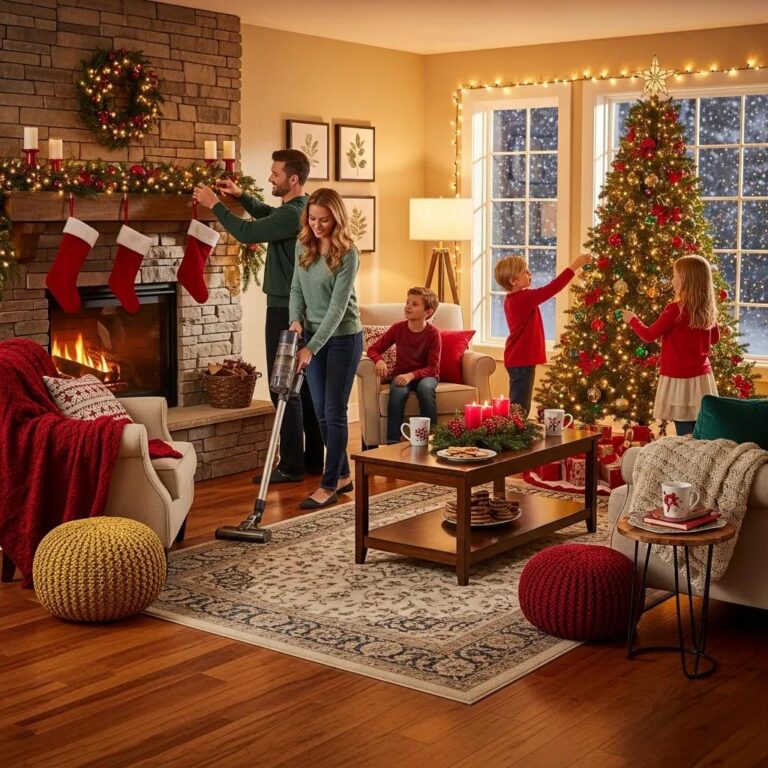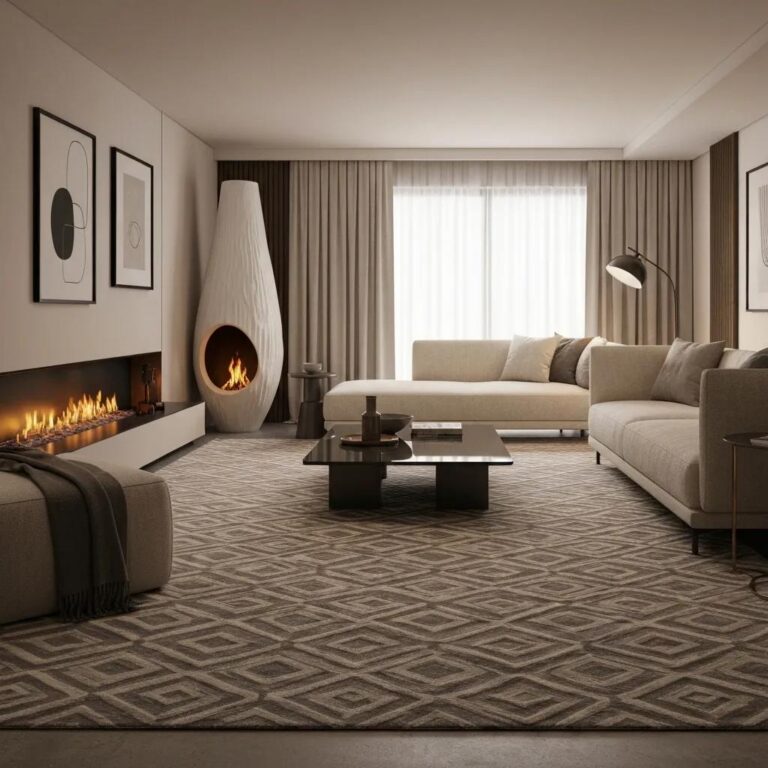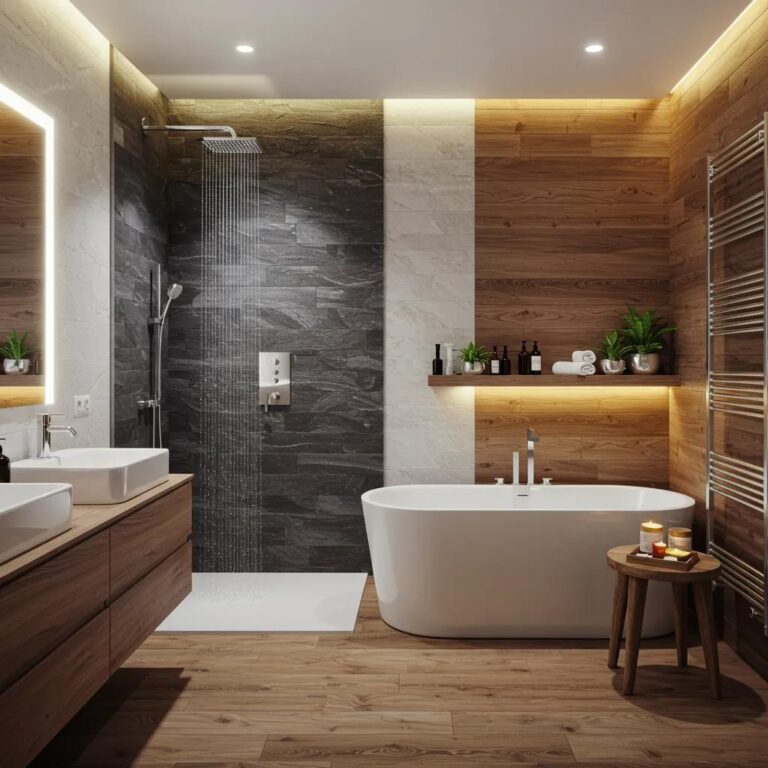Choosing the best flooring for high-traffic areas in your home is a balance of durability and style—after all, it needs to withstand daily wear while still enhancing your space. From bustling entryways to busy kitchens and hallways, the wrong material can quickly show signs of damage, while the right choice will stay beautiful for years. In this guide, we’ll explore the best flooring for high-traffic zones, comparing materials like luxury vinyl plank, porcelain tile, and hardwood to help you find the perfect combination of resilience, ease of maintenance, and timeless appeal.
Best Flooring for High-Traffic Areas That Actually Lasts
Understanding High-Traffic Areas and the Need for Durable Flooring
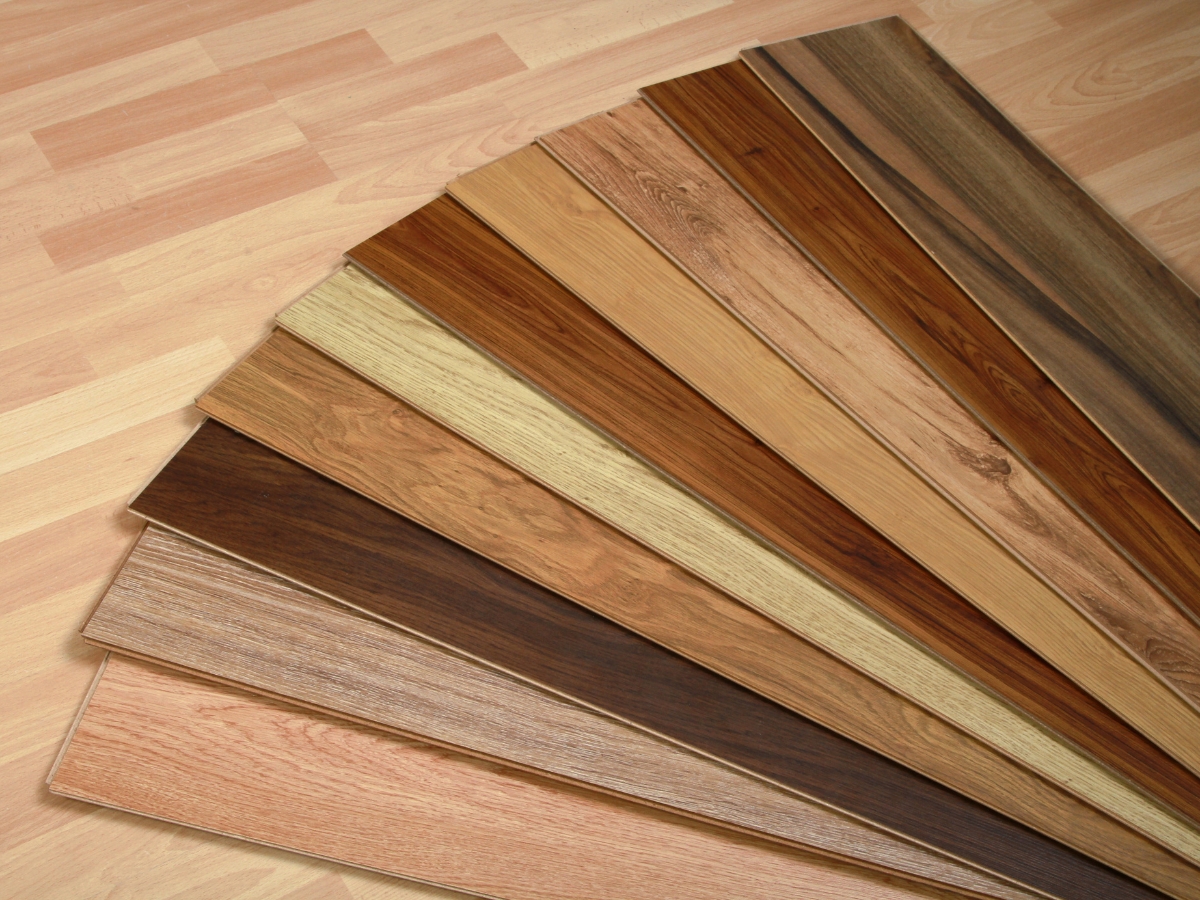
High-traffic areas in a home are spots where people and pets pass through or gather most often, bringing dirt, spills, and constant wear. Entryways see shoes dragging in debris, kitchens handle dropped utensils and spilled ingredients, and living rooms host gatherings with furniture moving across the surface. In these zones, flooring must withstand scratches, stains, and impact to preserve its look and prevent safety hazards like uneven wear or moisture damage.
Identifying High-Traffic Rooms and Zones
Spaces that see daily activity—hallways, mudrooms, and family rooms—are obvious examples. Staircases also qualify, as they concentrate footfall through narrow treads that can wear unevenly over time. Utility areas like laundry rooms face frequent spills and moisture, while children’s playrooms endure heavy toy traffic and furniture shifts. Recognizing these key zones helps in selecting materials designed for continuous use and simplified cleaning.
How Pets, Children, and Foot Traffic Affect Floors
Pets can scratch surfaces with claws, leave stains from accidents, and track in moisture from outdoor activities. Children’s toys, sports gear, and even high-heel shoes can gouge or dent softer materials. As people walk, fibers or finish coatings slowly abrade, and heavy loads on small areas compress and weaken the surface. These combined stresses demand flooring that resists abrasion, repels water, and bounces back from impacts without visible damage.
Key Durability Characteristics for Busy Households
A robust wear layer protects against scratches and scuffs, helping the floor retain its original appearance. Materials with waterproof cores—such as certain luxury vinyl or engineered tile—prevent moisture from seeping in and causing swelling or mold. Impact resistance ensures that heavy items accidentally dropped will not crack or chip the surface. Together, these attributes extend a floor’s lifespan and reduce maintenance needs.
Choosing the Right Flooring for Longevity
When selecting a floor for high-traffic areas, consider finish systems rated for commercial or heavy residential use, as they feature thicker protective coatings. Products with closed-cell cores offer superior water resistance, ideal for entryways and kitchens prone to spills. Rigid, layered constructions absorb shock and distribute weight evenly, reducing the chance of cracks under concentrated pressure. By matching each room’s demands to appropriate durability features, homeowners can achieve a balance of style, safety, and long-term performance without sacrificing aesthetics.
Which Flooring Types Are Best for High-Traffic Areas?
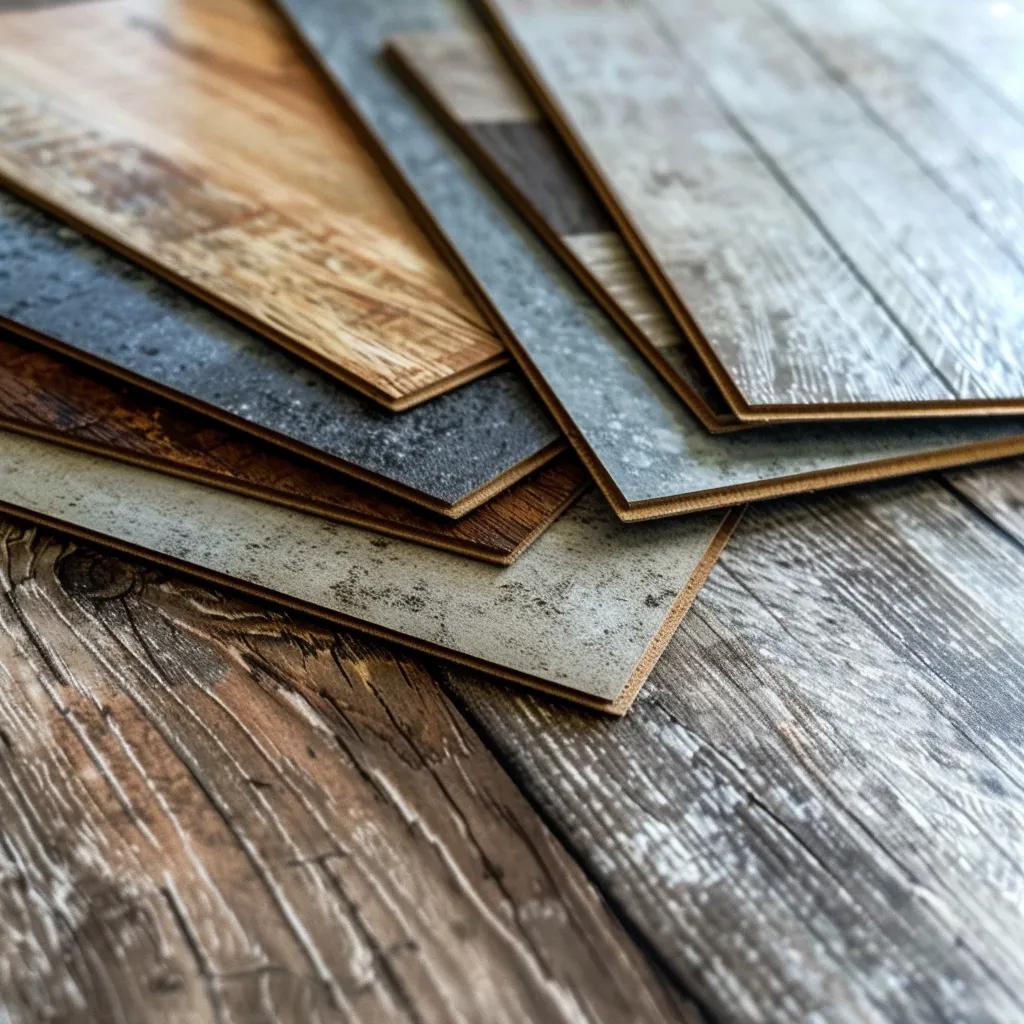
High-traffic areas demand flooring that withstands constant wear, moisture, and heavy loads without sacrificing appearance. By choosing materials with strong wear layers, moisture resistance, and impact tolerance, homeowners can enjoy stylish, low-maintenance floors in busy spaces.
Luxury Vinyl Plank
Luxury vinyl plank combines a waterproof core with a tough wear layer to resist scratches, spills, and pet accidents. Its multi-layer construction locks out moisture and keeps the finish intact under heavy use. Available in a wide range of wood and stone visuals, it adapts to any décor. Although planks must be replaced if severely damaged and the texture may not feel exactly like real wood, its durability makes it ideal for kitchens, basements, and living rooms where moisture and traffic are concerns.
Laminate Flooring
Laminate flooring uses a high-density core board topped with an abrasion-resistant layer to handle daily scuffs and foot traffic. Rated for residential use, it comes in many colors and patterns—often resembling hardwood or tile—at an affordable price point. Installation is quick thanks to interlocking edges, and cleanup requires only a damp mop. While laminate resists scratches well, standing water can cause swelling at seams, and once the wear layer is worn through, it cannot be refinished.
Porcelain and Ceramic Tile
Porcelain and ceramic tiles are among the hardest flooring options available. Their dense clay bodies and high-heat glazing earn them top ratings for wear, stain, and color retention. Being impervious to water makes them perfect for bathrooms, entryways, and mudrooms. They clean easily and maintain a fresh appearance for decades. On the downside, tiles can feel cold and hard underfoot, and heavy impacts can crack individual pieces. Adding underfloor heating or area rugs can improve comfort.
Hardwood and Engineered Wood
Solid hardwood delivers authentic warmth and can be refinished multiple times to restore its surface. Its Janka hardness scale rating reflects scratch resistance for different species. Engineered wood pairs a real wood veneer with a plywood core for greater stability in fluctuating humidity and temperature. Both options elevate home value and suit formal living areas or bedrooms with moderate traffic. Because wood can dent and water can damage the finish, proper sealing and controlled climate conditions are essential.
Understanding Durability Ratings for Informed Flooring Choices
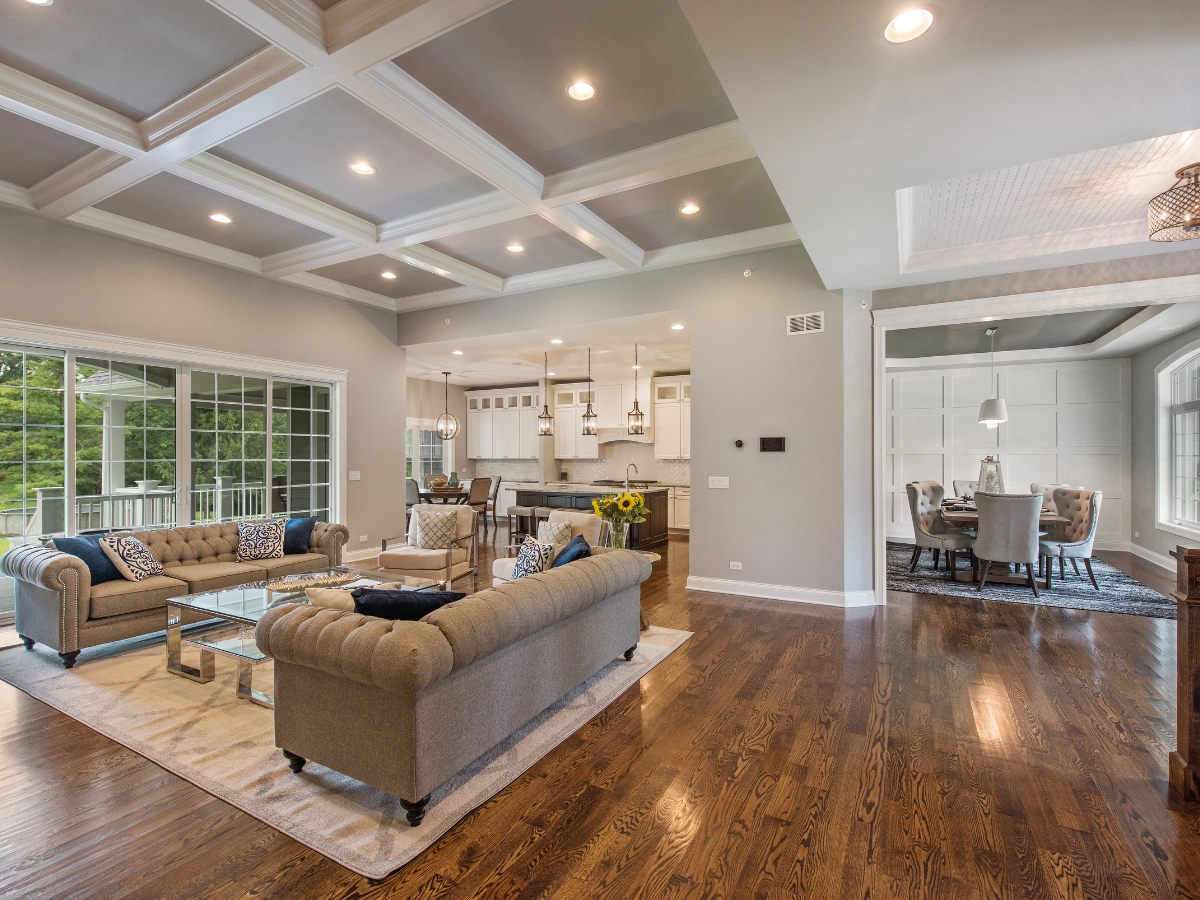
When selecting flooring for areas that see heavy use, durability ratings and industry standards provide an objective basis for comparison. These ratings measure specific properties—such as abrasion resistance, scratch resistance, and impact tolerance—so you match the flooring’s performance to your home’s traffic patterns. By referring to established scales like AC for laminate, PEI for tile, and Janka for wood, homeowners avoid both over-specifying products (and paying for unnecessary toughness) and under-specifying (leading to premature wear).
AC Ratings and Laminate Flooring Performance
Laminate flooring uses a factory-applied wear layer to protect the printed design beneath. AC ratings, ranging from AC1 to AC5, quantify how well that layer resists abrasion. An AC3 rating indicates suitability for most residential rooms, including busy living areas and hallways, as it withstands moderate daily scuffs. AC4-rated laminate steps up to very high residential or light commercial use, offering extra resistance in entryways and home offices where footwear and furniture movement can accelerate wear. Investing in a higher AC rating ensures the floor maintains its appearance longer, especially in households with pets or active children.
PEI Ratings and Tile Longevity
Porcelain and ceramic tiles gain their surface durability from a glazed layer that fends off scratches and stains. The PEI (Porcelain Enamel Institute) scale runs from 0 to 5, with higher numbers indicating stronger abrasion resistance. PEI0 tiles have no glaze and suit only walls, while PEI1 and PEI2 work for low-traffic areas like bathrooms and residential walls. PEI3 covers general residential use—bedrooms and living spaces—and PEI4 and PEI5 excel under heavy footfall in kitchens, entryways, and even commercial settings. Choosing PEI4 or PEI5 for high-traffic zones means the floor will resist everyday wear, maintain color consistency, and require minimal upkeep.
Janka Hardness and Hardwood Durability
Solid wood floors can dent when subjected to impact. The Janka hardness test measures the force needed to embed a half-inch steel ball into wood—to the ball’s radius—offering a direct comparison of how well different species resist denting. For instance, red oak scores around 1,290 on the Janka scale, while harder species like Brazilian cherry reach 2,350. Engineered wood carries the same veneer hardness as its solid counterpart but adds dimensional stability through a layered plywood core. Understanding species ratings helps you pick a wood floor that withstands heavy use in dining rooms and entryways without compromising on the natural beauty of wood grain.
Putting Ratings into Practice
To choose flooring that balances cost, performance, and style, start by assessing each room’s specific demands. A hallway leading from the front door requires a higher AC or PEI rating than a guest bedroom. Kitchens exposed to dropped utensils and spills need tile rated at least PEI4, whereas a master bedroom can thrive on PEI3 or an AC3 laminate. For areas where heavy furniture or pet nails may cause concentrated pressure, select a hardwood species with a Janka value above 1,800. By aligning durability ratings with actual use cases, you ensure each floor you install delivers long-term satisfaction and minimizes maintenance costs.
How Can Homeowners Choose the Best Flooring for High-Traffic Areas In Their Atlanta Home?
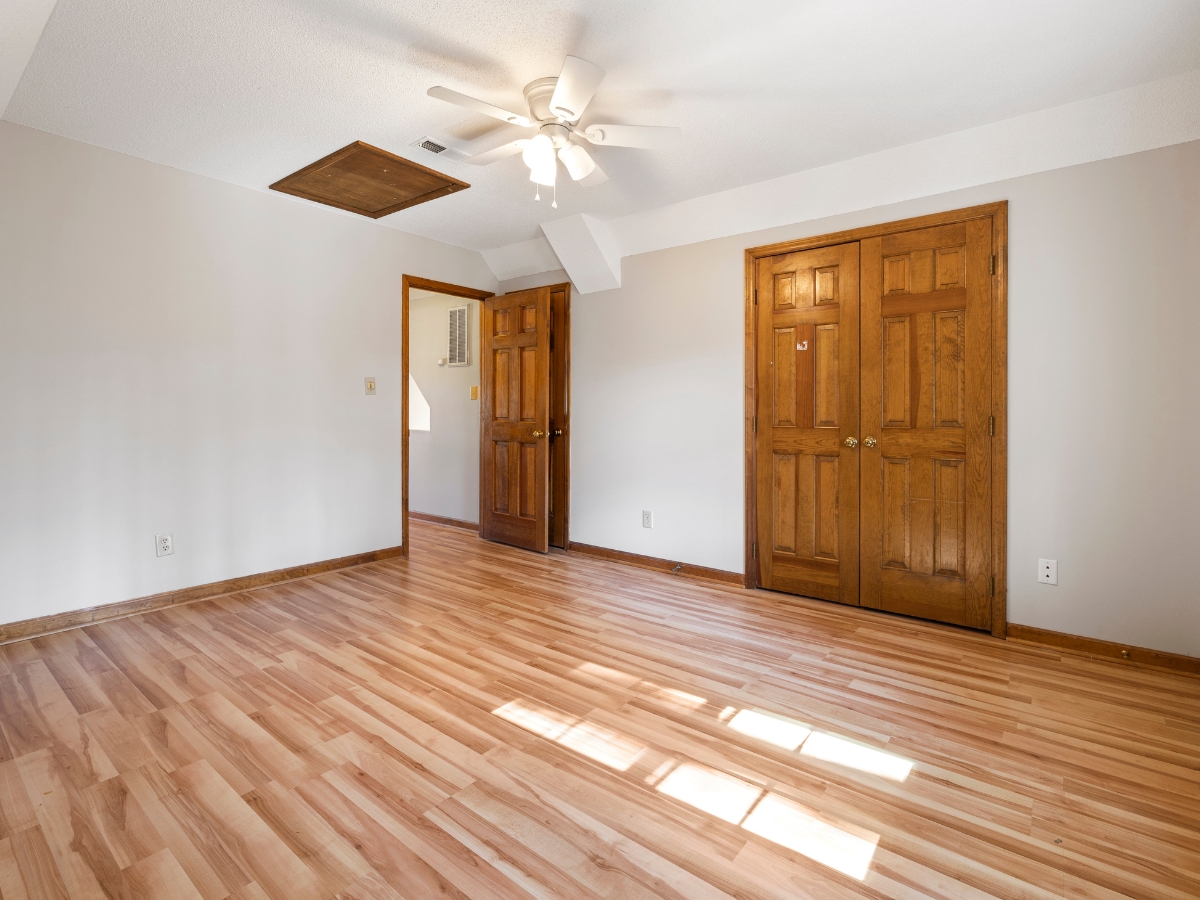
Selecting the right flooring for an Atlanta home starts with understanding both regional challenges and your personal needs. From heat and humidity to heavy foot traffic and décor preferences, a well-informed choice ensures lasting performance and satisfaction. By matching material properties to local climate conditions, household routines, and professional installation, you can achieve the ideal balance of resilience, style, and maintenance ease.
Climate Impacts on Flooring in Atlanta
Atlanta’s hot, humid summers and occasional heavy rain create an environment where moisture control is paramount. Solid hardwood may absorb excess humidity, leading to cupping or warping unless HVAC systems keep indoor conditions steady. Engineered wood, with its layered core and enhanced adhesive systems, offers greater dimensional stability, reducing seasonal movement.
Luxury vinyl planks and porcelain tile excel in these conditions because their waterproof cores and impervious surfaces prevent moisture intrusion altogether. Even in basements or entryways where water exposure is most likely, these options maintain their shape and finish. When evaluating any wood or composite product, look for moisture-resistant locking systems and factory-applied sealants that reinforce joints against Atlanta’s fluctuating moisture levels.
Lifestyle Considerations for Busy Households
Daily routines, pet ownership, and family size play a huge role in material selection. Homes with pets or young children benefit from flooring that resists scratches and stains. Luxury vinyl and high-grade laminate incorporate scratch-proof wear layers, while ceramic and porcelain tiles shrug off spilled drinks without staining.
For formal living areas or master bedrooms where foot traffic is lighter, solid hardwood or wide-plank engineered wood can create a sense of warmth and luxury. Budget constraints also guide decisions: entry-level laminate provides a hardwood look at low cost, whereas higher-end materials like natural stone or premium hardwood command a premium but add long-term value. Ultimately, align each flooring choice with the way your household uses the space and the level of upkeep you’re prepared to provide.
Professional Installation and Lasting Performance
Even the most durable flooring will underperform if installed incorrectly. In Atlanta, skilled installers prepare subfloors to manage moisture vapor and keep surfaces flat—an essential step for tile grout and floating plank systems alike. Installing a proper moisture barrier under wood and laminate protects against groundwater and slab moisture.
Accurate layout planning ensures that patterns align with room dimensions, minimizing waste and preventing unsightly seams near doorways. Certified professionals also follow manufacturer guidelines for acclimation, nailing or gluing, and finishing. By entrusting installation to experienced local flooring teams, you safeguard manufacturer warranties and promote uniform wear across your home. This expertise translates into floors that remain level, defect-free, and visually appealing long after installation.
What Are the Best Maintenance and Care Practices for High-Traffic Flooring?
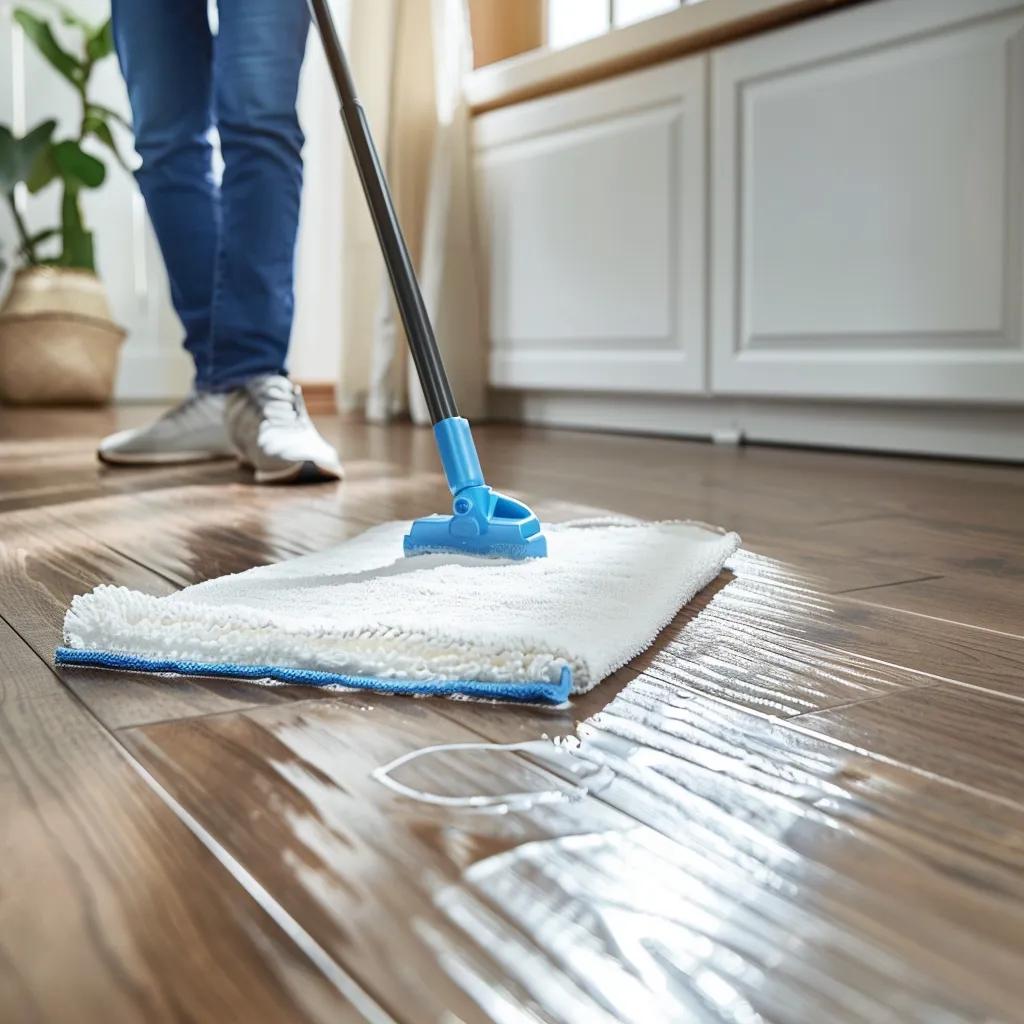
High-traffic flooring needs regular care to maintain appearance and performance. Each material requires specific methods that clean effectively without causing damage. Establishing a consistent routine—daily dust removal, weekly cleaning, and periodic deeper maintenance—extends the life of your floors and keeps them looking their best.
Maintaining Luxury Vinyl and Laminate
Luxury vinyl plank and laminate both feature protective wear layers but react differently to moisture and heat. To clean, use a pH-neutral floor cleaner diluted in water. Apply with a well-wrung microfiber mop to lift dirt and spills; avoid abrasive pads or harsh detergents that can dull the finish. Laminate should never be steam-mopped, since excess heat and moisture can cause swelling at the seams. Any spills should be wiped up immediately to prevent liquid from seeping into joints. For vinyl, occasional use of a manufacturer-approved polish can help restore slip resistance and shine.
Caring for Porcelain and Ceramic Tile
Tile surfaces stand up well to dirt and moisture, but their grout lines need special attention. Sweep or vacuum daily to remove grit and grit that can abrade both the surface and grout. Once a month, clean grout with a mild acid-free grout cleaner and a stiff nylon brush to lift embedded soils. Rinse thoroughly to remove residue, then allow the floor to dry completely. Sealing grout annually prevents staining and reduces mold growth. For the tiles themselves, a gentle mop with a neutral cleaner is sufficient; avoid ammonia or bleach-based products that can wear away sealants.
Protecting and Refinishing Hardwood
Solid and engineered hardwood bring warmth to busy rooms but demand care to avoid dents, scratches, and finish wear. Place felt pads under chair and table legs to prevent gouges, and use area rugs in entryways to trap dirt before it reaches the wood. Sweep or vacuum frequently with a soft-bristle attachment to prevent abrasive particles from scratching the surface. Every few years, apply a thin coat of compatible floor finish—often a water-based polyurethane—to renew the protective layer. When the finish becomes uneven or worn in high-traffic zones, sanding and a full refinish restore uniform appearance and protect the wood fibers. Refinishing frequency depends on use but typically falls in the range of every seven to fifteen years for solid hardwood and once or twice for engineered products.
What Specialized Flooring Options Are Best for Homes with Pets and Kids?
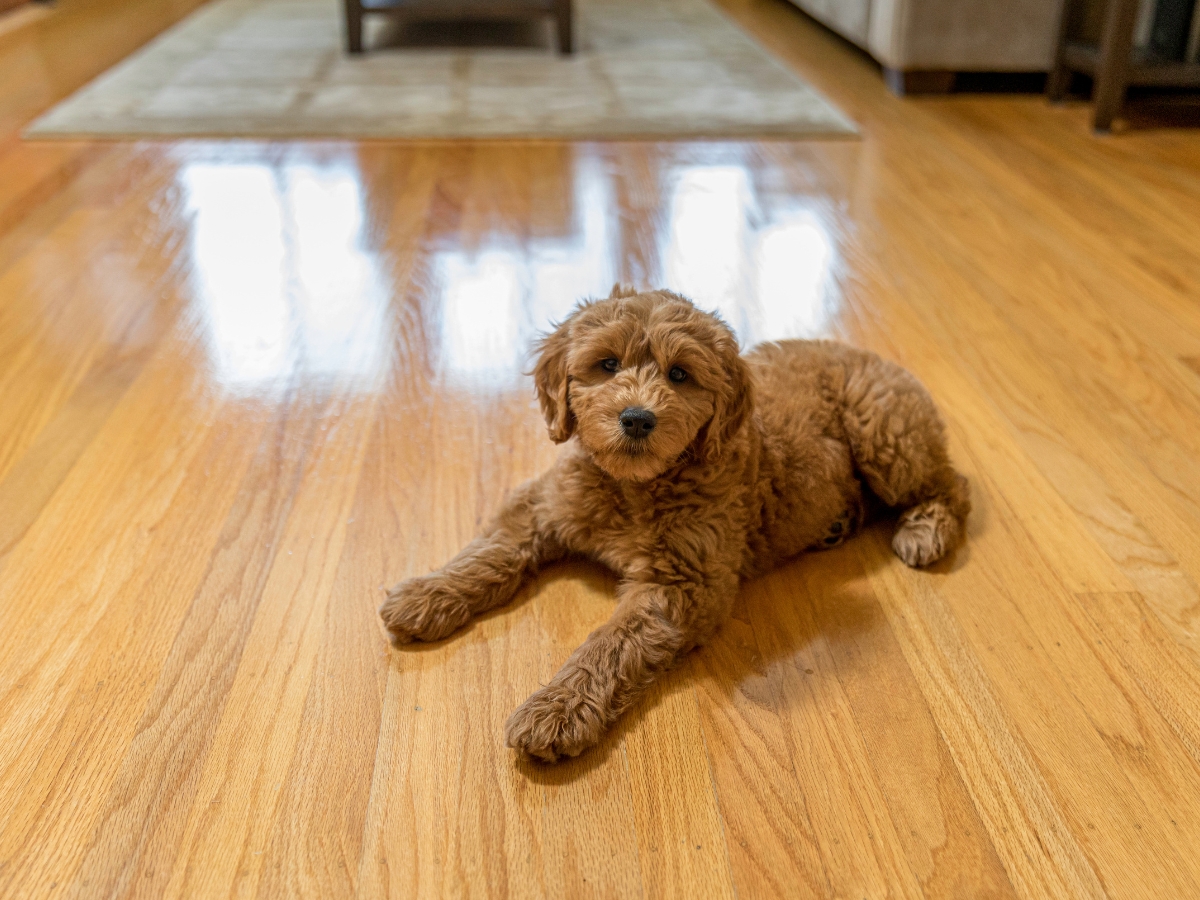
Choosing the right floor for a household with pets and children means finding surfaces that stand up to scratches, spills, and heavy wear—all while staying safe and easy to clean. Durable materials with built-in resistance keep your home looking fresh, reduce the need for repairs, and create a healthy environment for the whole family.
Scratch and Stain Resistance for Pet Owners
Pets can be hard on floors: claws leave marks, and accidents happen. Luxury vinyl planks and high-grade laminate both feature thick wear layers that shrug off paw scratches and resist liquid penetration. Their tight seams prevent moisture from seeping into the subfloor, so spills and pet messes wipe away cleanly without staining. Porcelain tile takes durability further—its dense body and glazed surface block stains and dents, and textured finishes add grip under paws. Unlike untreated hardwood, these options require no special sealers or treatments, making them a practical choice for rooms where pets spend the most time.
Waterproof and Slip-Resistant Surfaces for Kids’ Play Areas
Active children demand floors that resist water and guard against falls. Rigid-core vinyl planks combine a waterproof composite core with embossed textures designed to mimic wood grain or stone while reducing slipperiness. When wet, these floors maintain traction, cutting down on skids after spilled drinks or bathroom splashes. Similarly, porcelain and ceramic tiles with factory-applied slip-resistant coatings work well in kitchens, mudrooms, and playrooms. They tolerate repeated cleaning—wipe up craft supplies, snack spills, and tracked-in mud without watermarks or warped boards. Both vinyl and tile offer seamless transitions between rooms, so cleanup remains straightforward across open-plan living spaces.
Hypoallergenic and Easy-Clean Flooring
Soft surfaces can harbor dust mites, pollen, and pet dander, aggravating allergies and asthma. Hard, smooth floors like tile, vinyl, and laminate provide no hiding place for allergens. Routine sweeping or dry mopping removes most particles, while a quick pass with a damp microfiber mop collects any remaining dust without soaking the floor. Unlike carpet, which traps fabrics darts and requires deep steam cleaning, these hard floors let you maintain a healthier air environment with minimal effort. Sealed grout lines on tile floors prevent dirt buildup, and modern vinyl options resist wear without needing wax or special cleaners.
Why Professional Installation Matters for Flooring Longevity
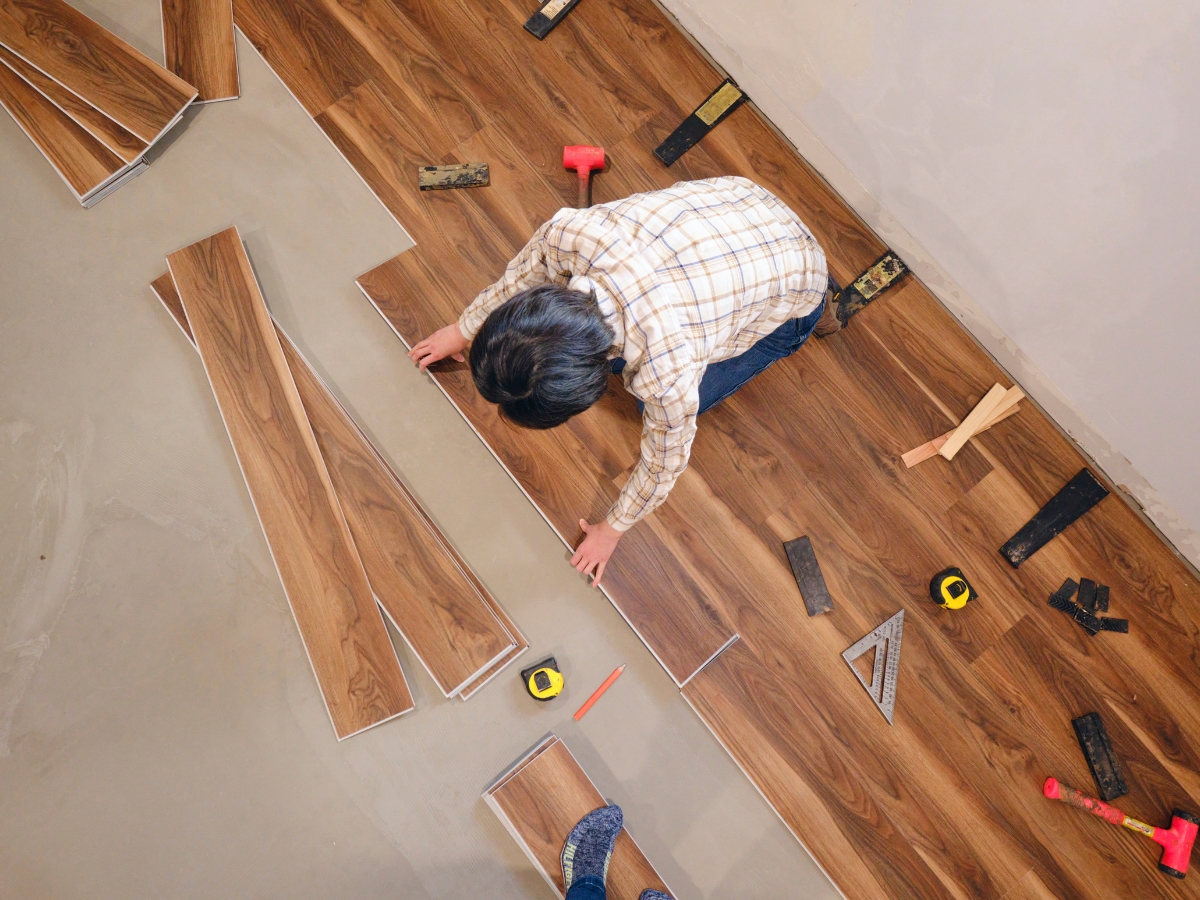
Durable flooring starts with precise installation. Certified installers ensure subfloors are level and sound, address moisture concerns with proper barriers, and follow manufacturer guidelines for spacing and sealing. This attention to detail prevents common failures—gaps that trap dirt, uneven wear that weakens plank edges, and moisture intrusion that causes tiles to lift or wood to cup. By laying each material correctly, professionals help floors perform as designed, protecting your investment over the long haul.
Benefits of Expert Installers in Metro Atlanta
In the Atlanta area, experienced flooring teams understand local building codes, climate considerations, and product recommendations. They inspect for uneven concrete or wood subfloors, then use the right underlayment or vapor retarders to block groundwater or humidity-driven vapor. For tile work, they set patterns with consistent grout lines and slope wet-area floors toward drains. When fitting wood or vinyl, they allow for expansion gaps and secure planks so that seasonal temperature swings won’t cause buckling. Their skill minimizes callbacks, maintains warranties, and delivers a smooth, professional finish that stands up to daily use.
How Installation Costs Differ by Material
Labor charges vary with each flooring type’s complexity. Floating floors—like many laminates and luxury vinyl planks—lock together and install quickly over suitable underlayment, translating into lower per-square-foot labor rates. Solid hardwood or engineered wood often requires nailing or gluing, precision acclimation, and on-site sanding or finishing, which increases time and cost. Tile installation is the most intricate: installers must apply mortar or thinset evenly, cut tiles for tight fits around fixtures, grout and seal joints, and account for substrate preparation, which collectively raises labor expenses. By comparing bids that detail material handling, site prep, and cleanup, homeowners can balance upfront costs against expected longevity and maintenance savings.
When DIY Installation Makes Sense—and When It Doesn’t
Tackling a simple floating floor can work for handy homeowners with the right tools and patience. DIY makes sense when subfloors are already flat, moisture levels are low, and products feature user-friendly systems. However, improper underlayment or failure to install a reliable moisture barrier can lead to warped planks or mold growth. Uneven surfaces and misaligned seams not only look unprofessional but can void manufacturer warranties. Complex jobs—like large-format tile, in-floor heating, or multi-room hardwood installations—benefit from a pro’s precision and code knowledge.
Investing in Lasting Performance
Choosing professional installation may seem more expensive at first, but it pays off through reduced repairs, consistent warranties, and optimal material performance. Whether you’re laying waterproof vinyl in a basemeant or refinishing formal hardwood in a living room, expert installers transform your project into a resilient, attractive floor that handles high-traffic demands. By matching your flooring choice to your home’s conditions and relying on skilled installation, you ensure years of dependable service and satisfaction.
Frequently Asked Questions
What are the best flooring options for high-traffic areas outdoors?
For outdoor high-traffic areas, consider materials like porcelain pavers, composite decking, or rubber tiles. Porcelain pavers are durable and resistant to moisture, making them ideal for patios and walkways. Composite decking offers a wood-like appearance without the maintenance, while rubber tiles provide excellent slip resistance and cushioning, perfect for poolside areas. Each option should be chosen based on climate, exposure to elements, and intended use to ensure longevity and safety.
How can I assess the durability of flooring before purchasing?
To assess flooring durability, check for industry ratings such as AC for laminate, PEI for tile, and Janka hardness for wood. Look for warranties that indicate manufacturer confidence in the product’s lifespan. Additionally, consider the thickness of the wear layer, water resistance features, and the material’s ability to withstand impacts. Visiting showrooms to see samples and asking for performance data can also help you make an informed decision.
What maintenance practices extend the life of high-traffic flooring?
Regular maintenance practices include sweeping or vacuuming to remove dirt and debris, using pH-neutral cleaners for mopping, and promptly addressing spills to prevent staining. For wood floors, applying protective finishes every few years can help maintain their appearance. Additionally, placing mats in entryways can reduce wear from dirt and moisture. Following manufacturer guidelines for care will also ensure the longevity of your flooring investment.
Are there eco-friendly flooring options suitable for high-traffic areas?
Yes, eco-friendly flooring options include bamboo, cork, and recycled rubber. Bamboo is a rapidly renewable resource that offers durability and style. Cork is naturally resistant to mold and mildew, making it a great choice for high-traffic areas. Recycled rubber flooring is durable and provides excellent cushioning, ideal for playrooms or gyms. When selecting eco-friendly options, ensure they meet durability standards for high-traffic use.
How does humidity affect flooring choices in Atlanta?
Humidity in Atlanta can lead to issues like warping and mold growth in certain flooring types. Therefore, homeowners should prioritize moisture-resistant materials such as luxury vinyl plank and porcelain tile, which maintain stability in humid conditions. Engineered wood with moisture-resistant joints is also a good option. It’s essential to consider the local climate when selecting flooring to ensure it withstands environmental challenges.
What are the signs that my flooring needs to be replaced?
Signs that flooring may need replacement include visible wear and tear, such as deep scratches, stains, or warping. If you notice creaking or uneven surfaces, it may indicate underlying issues. For carpets, persistent odors or matting can signal the need for replacement. Additionally, if maintenance costs are rising or the flooring no longer meets your lifestyle needs, it may be time to consider new options.
Conclusion
Choosing the right flooring for high-traffic areas means balancing durability, style, and long-term performance. Whether you prefer luxury vinyl plank, tile, or commercial-grade carpet, the key is professional installation that stands the test of time. At Restor-It, Inc., we specialize in high-performance flooring solutions tailored to your home’s needs—combining resilience with design so your floors look great year after year. Call us today at (678) 355-6645 or fill out our online form and let our experts help you select—and install—the best flooring for high-traffic areas in your household. With Restor-It, Inc., you get floors built to last.

